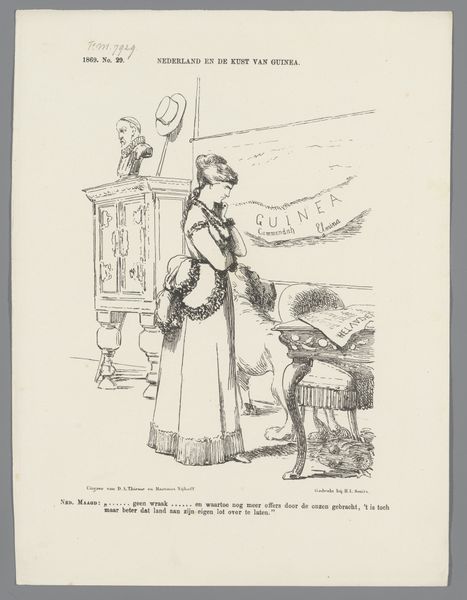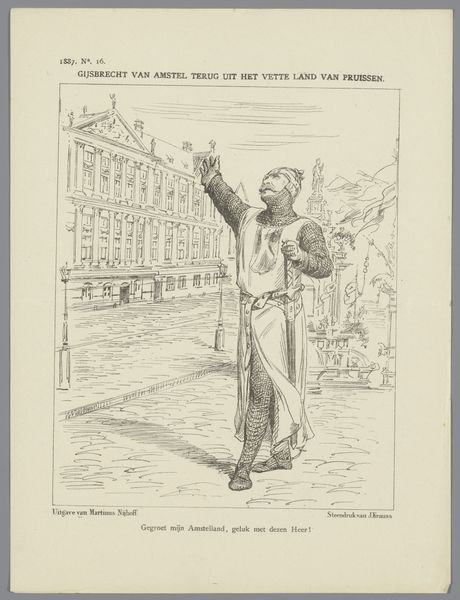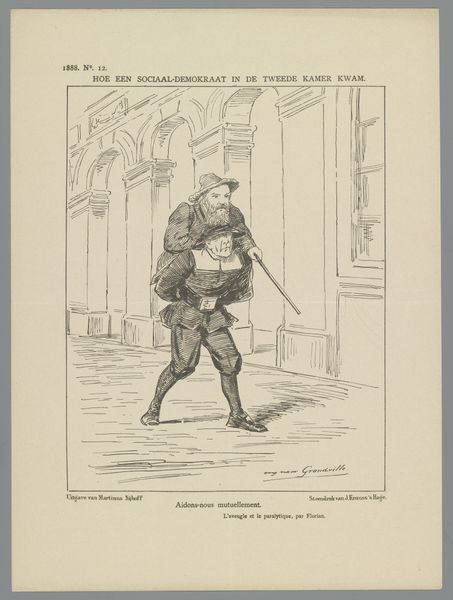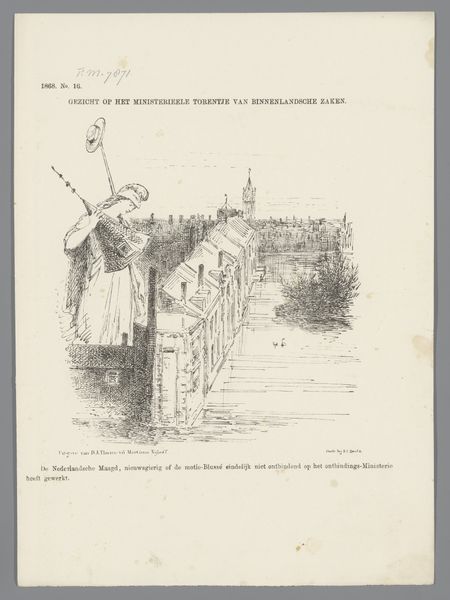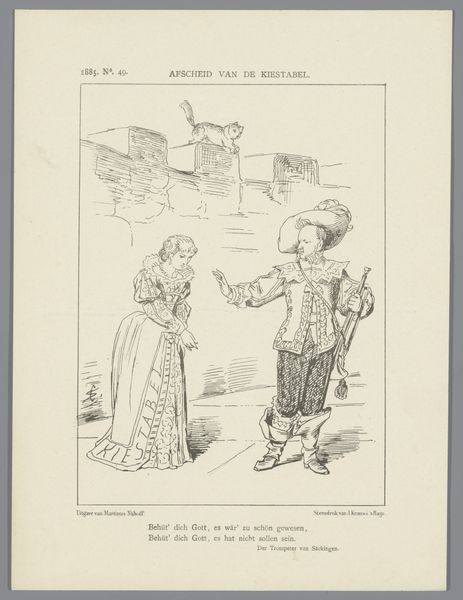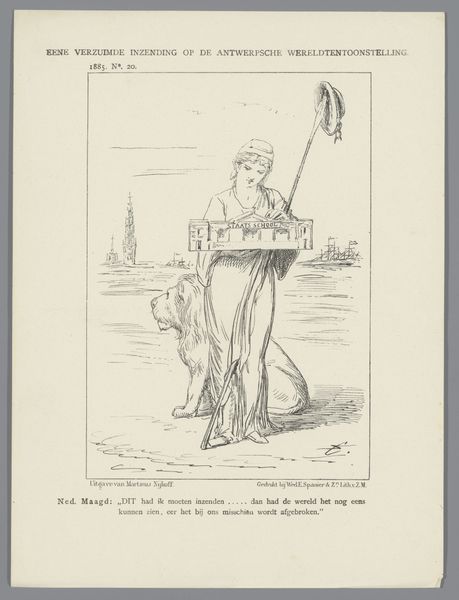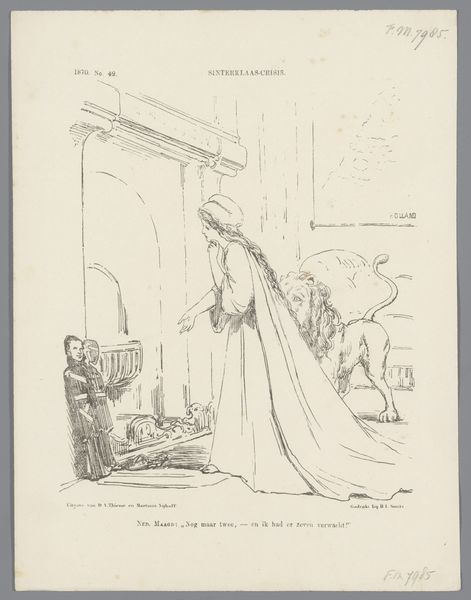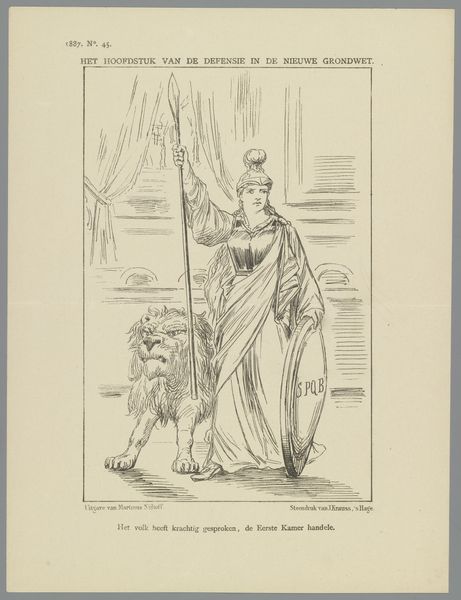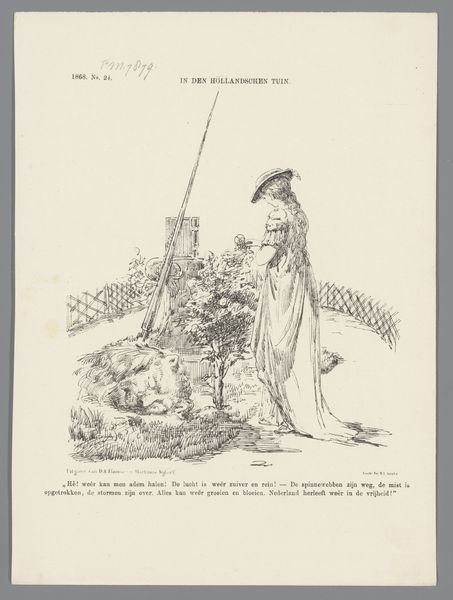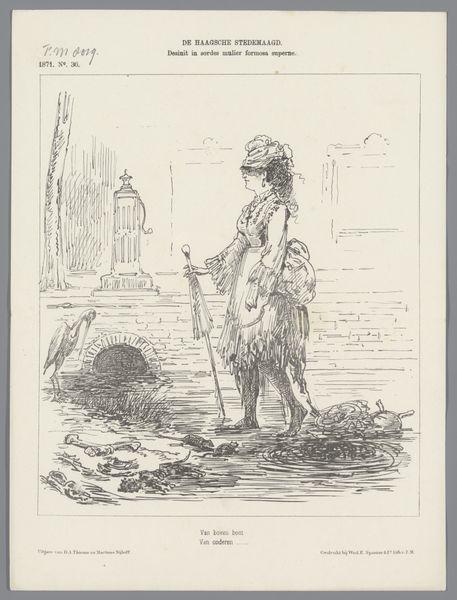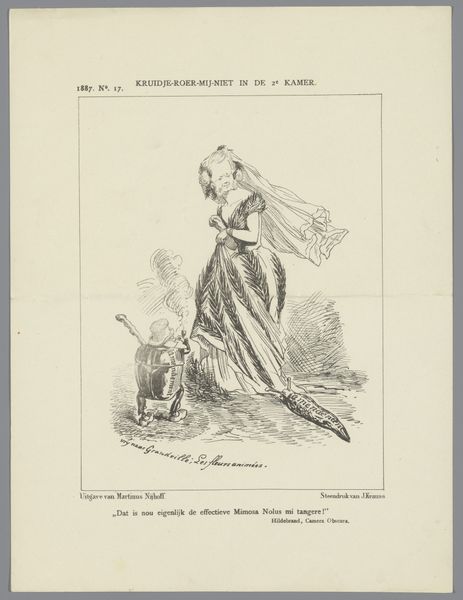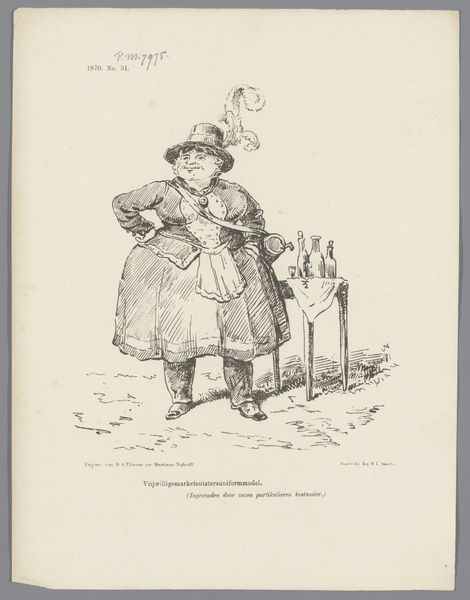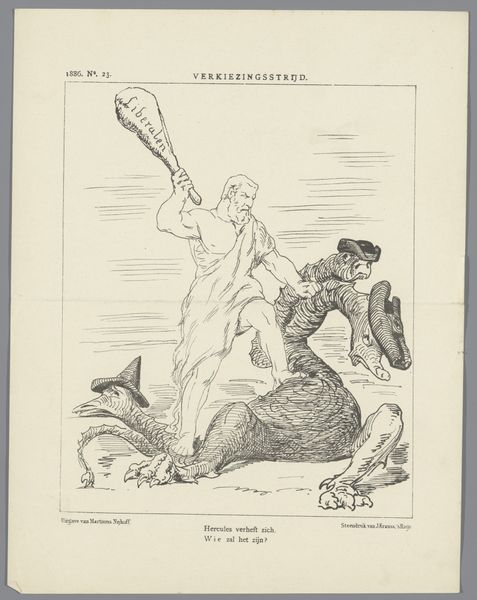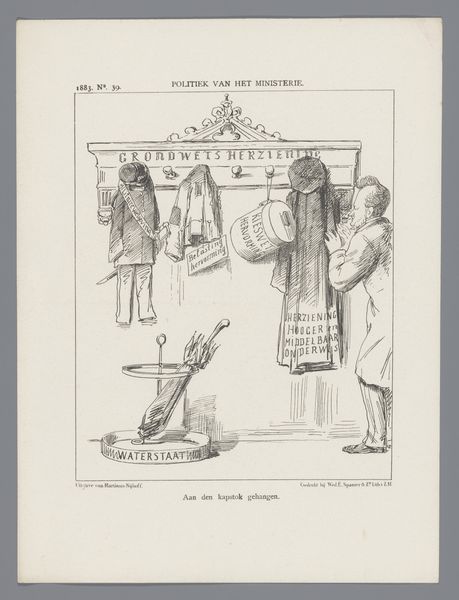
drawing, print, ink, engraving
#
drawing
#
allegory
# print
#
figuration
#
ink
#
history-painting
#
engraving
Dimensions: height 275 mm, width 215 mm
Copyright: Rijks Museum: Open Domain
Curator: This engraving is titled "Spotprent met Themis op het Binnenhof," dating from 1885 by Johan Michaël Schmidt Crans. It depicts the allegorical figure of Themis in front of the Binnenhof in The Hague. What are your immediate impressions? Editor: It’s quite linear, very reliant on line work, which creates a stark and somewhat austere atmosphere. The architectural background contrasts sharply with the detailed rendering of Themis herself, creating an interesting tension. Curator: Indeed. The choice to represent justice as Themis, a Greek Titaness, laden with symbols like the scales and sword, speaks volumes about the perceived ideal of justice at the time: impartial and armed. Notice her determined gaze and the imposing backdrop of the Binnenhof. This placement firmly grounds the ideal of justice within the physical realm of political power in the Netherlands. Editor: The contrast of textures and weights in the lines creates a really distinct visual hierarchy, focusing our attention right at the balanced scales in her hand, drawing attention to the necessity for a finely tuned judgment. This figure of Justice feels grounded, firm. Curator: The inscription "Nu genoeg van dat debatteeren, Oportet lites finem habere." – "Enough of that debating, litigation should have an end," clearly indicates the artist’s commentary on legal proceedings—probably frustrations within the legislative process around that time. It makes this piece function on different layers: a classical allegorical presentation, a sharp comment, and an historic record. Editor: So you’re saying it is operating as a commentary on temporal circumstances? Using allegorical framework to communicate political exasperation and its context. Visually, the sharp contrast serves to underline that impatience. It really uses stark blacks and whites to make a very direct statement about the moment. Curator: Exactly. By embodying Justice as a recognizable icon standing tall among the house of governance, Crans prompts us to remember ideals within our own daily debates today, holding leaders to those same enduring values represented here. Editor: So beyond aesthetic appreciation and an historic record, the work pushes its viewers toward reflections on present realities and moral conduct, using recognizable cultural emblems of balance and equity. Curator: Precisely.
Comments
No comments
Be the first to comment and join the conversation on the ultimate creative platform.
